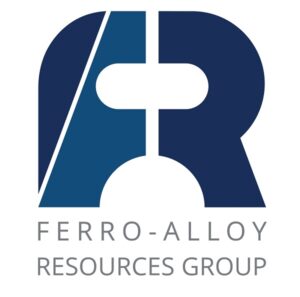Ferro Alloy Resources Ltd (LON:FAR), the vanadium mining and processing company with operations based in Southern Kazakhstan, has announced that the Company has today received notice of further investment of US$7 million by Vision Blue Resources Limited under the Subscription Agreement entered into, as announced on 15 March 2021 and amended on 1 June 2021.
Highlights
· Further investment by Vision Blue of US$7 million under the Subscription Agreement comprising:
o US$2.8 million by way of the issue of 22,346,726 ordinary shares in the Company to Vision Blue (‘New Ordinary Shares’) at a pre agreed price of 9 pence per Ordinary Share; and
o US$4.2 million by way of the issue of convertible loan notes (‘CLN’) to Vision Blue which have today been issued and which will convert in accordance with the Subscription Agreement into 33,520,088 Ordinary Shares in due course
· The Investment will bring the total invested to date by Vision Blue and its co-investors to US$10.1 million
· The Investment comes on an accelerated timetable which will enable the expansion of the Feasibility Study as well as improvements on site to the existing operations.
Nick Bridgen, CEO, commented: “Accelerating the US$7 million tranche of investment is a vote of confidence in our project by our strategic investor Vision Blue Resources. With this accelerated investment, the plant improvements we have already made, the improved product prices and at last, good deliveries of raw materials, we are now in a strong position to realise the benefits of the hard work undertaken in the last few years and look forward to the next chapter with confidence. “
Further Details
The US$7.0 million of funding received from the Investment comes on an accelerated timetable which will enable further work towards the expansion of the Feasibility Study scope of work as well as improvements on site to the existing operations.
As we have announced previously, the Company is planning to expand the scope of the feasibility study which is already underway. This includes potentially expanding the scope to include further evaluation of the Phase 2 expansion to 4 million tonnes per year of ore treated and to further establish the potential value to be extracted in the form of by-products. The expanded scope is likely to entail a drilling programme to upgrade sufficient resource to the JORC Indicated category to enable planning for production at the expanded rate for a significant mine life. This will involve further drilling of ore-bodies 2 to 5, a large part of which is already in the reserve category under the Kazakhstan GKZ system of resource and reserve classification. This, together with the longer time-period needed to complete variability process testing on the wider range of ore samples is likely to extend the timing of completion of the study into the first half of 2022. However, shareholders should note that certain elements of the feasibility study work programme are expected to be announced on an earlier basis as certain technical milestones are achieved. The Company believes that the expanded scope will make for a more robust and profitable project and bring enhanced returns to shareholders in the longer term.
Admission and Total Voting Rights
Application is being made for admission of the New Ordinary Shares to the Official List of the FCA (Standard Segment) and trading on the London Stock Exchange’s Main Market for listed securities (“Admission”) which is expected to occur at 8 a.m. on or around 1 July 2021 and also to trading on the AIX. For the purpose of the Disclosure and Transparency Rules, following Admission, the enlarged issued share capital of the Company will comprise 377,676,799 ordinary shares. The Company does not hold any shares in treasury and following Admission this figure may be used by shareholders as the denominator for the calculations by which they will determine if they are required to notify their interest in, or a change to their interest in, the Company, under the Disclosure Guidance and Transparency Rules.
Following the subscription for the New Ordinary Shares completing, Vision Blue and its co-investors will have been issued with 47,087,747 Ordinary Shares representing 12.5 per cent. of the issued share capital of the Company and hold US$4.2 million of loan notes which are convertible into New Ordinary Shares at the pre-agreed issue price of 9 pence per share, as soon as the Company is in a position to do so without triggering any obligation to issue a prospectus.
Capitalised terms in this announcement, unless otherwise defined, shall have the meaning given to them in the announcement of 15 March 2021.
Sir Mick Davis, Chairman, commented: “The Ferro-Alloy Resources and Vision Blue teams have worked closely together over recent weeks to enhance the Feasibility Study for the Balasausqandiq vanadium deposit and we are looking forward to reporting on progress in the coming months. As we continue our work I am increasingly convinced of the Balasausqandiq deposit’s potential to become the leading vanadium asset in the world. Uniquely, Balasausqandiq benefits from a combination of low capital and operating costs, access to infrastructure, an advantageous location and a scale that means it can meet our expectations for significant growth in demand for vanadium – which we foresee due to its growing use in high grade steel and flow batteries.”


